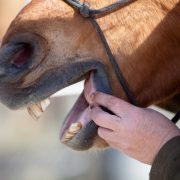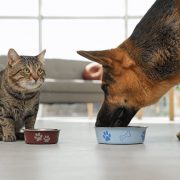Inter-rater reliability of the Feline Grimace Scale in Cats undergoing dental extractions
Inter-rater reliability of the Feline Grimace Scale in Cats undergoing dental extractions
Published 19 August 2020
Watanabe, R. et al. (2020) Inter-rater reliability of the Feline Grimace Scale in Cats undergoing dental extractions. Frontiers in Veterinary Science, 7, p.302. https://doi.org/10.3389/fvets.2020.00302
This paper reports on a small prospective blinded study of 24 cats, which had undergone dental extractions. The aims of this study were to evaluate the inter-rater reliability of the Feline Grimace Scale (FGS) after oral treatment and the effect of the caregiver’s presence on FGS scores
Images of the cats’ faces were captured from video recordings with or without the caregiver’s presence at six hours postoperatively (day 1), day 6, and before and after any rescue analgesia. The images where then randomized and independently evaluated by four raters using the FGS. A total of 91 images were scored (0-2) on 5 criteria: ear position, orbital tightening, muzzle tension, whiskers, and head position.
These were compared against real-time pain assessment performed by one male observer using the Glasgow Composite Measure Pain Scale-Feline (CMPS-F) at 23 different time-points from day 0 to 6. This observer was unaware of the oral condition and/or treatment of the cat. Additionally, there were 29 images with a corresponding match (i.e. image from the same time-point with or without caregiver’s presence), resulting in 58 images to be reviewed
The authors reported that FGS scores showed good inter-rater reliability [0.84 (0.77–0.89)], although the reliability for muzzle [0.56 (0.43–0.690)] and whiskers [0.64 (0.50–0.76) were lower than for ears [0.68 (0.55–0.78)], orbital tightening [0.76 (0.65–0.84)], and head position [0.74 (0.63–0.82)]. The FGS scores were not different with [0.075 (0–0.325)] or without [0.088 (0–0.525)] the caregivers’ presence (p = 0.12).
Despite acknowledging the limitations of the study (small sample size, poor image quality in some cases and under representation of cats with high pain scores on CMPS-F) the authors concluded that
the FGS is a reliable tool for assessment of oral pain in cats, though some action units were difficult to identify due to poor image quality and facial oedema and inflammation. The caregiver’s presence did not affect the FGS scores.
While the data for this study was collected in a veterinary clinic, it does raise the possibility of using video recordings made by owners to aid in the assessment of post-operative pain, in cases where it may be difficult to see the cat in the surgery.





Leave a Reply
Want to join the discussion?Feel free to contribute!